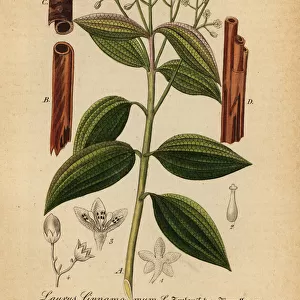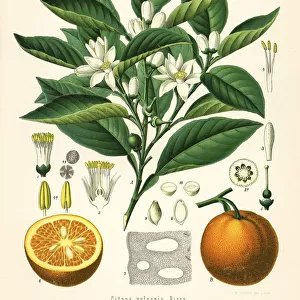Home > Europe > United Kingdom > England > London > Museums > Natural History Museum
Physostigma venenosum, calabar bean
![]()

Wall Art and Photo Gifts from Mary Evans Picture Library
Physostigma venenosum, calabar bean
Illustration from the Botany Library Plate Collection held at the Natural History Museum, London
Mary Evans Picture Library makes available wonderful images created for people to enjoy over the centuries
Media ID 8613649
© Mary Evans Picture Library 2015 - https://copyrighthub.org/s0/hub1/creation/maryevans/MaryEvansPictureID/10706671
Bean Calabar Eudicot Eurosid Fabaceae Fabales Fabidae Legume Leguminosae Poisonous Rosid Angiospermae Dicot Dicotyledon Magnoliophyta
EDITORS COMMENTS
This illustration showcases the exquisite beauty of Physostigma venenosum, commonly known as the Calabar bean, a plant belonging to the Fabaceae or legume family. The illustration, held in the esteemed Botany Library Plate Collection at the Natural History Museum in London, offers a detailed and accurate portrayal of this fascinating plant. Physostigma venenosum is an angiosperm, a type of flowering plant that produces seeds enclosed in an ovary. As a member of the Eudicotyledons, or eudicots, it is characterized by having two seed leaves, or cotyledons, upon germination. The plant is further classified as a rosid, a subclass within the eudicots, and a Fabid, a family within the larger Rosids clade. The Calabar bean is a notable member of the Fabales order, which includes a diverse array of plants such as beans, peas, and lentils. The plant is native to West and Central Africa and is renowned for its poisonous properties. The beans contain the neurotoxin physostigmine, which was historically used for various medicinal and ritual purposes. The illustration reveals the intricate details of the Calabar bean's various morphological features. The plant is depicted with its large, compound leaves, which are pinnately compound with numerous leaflets. The illustration also highlights the distinctive, elongated, and curved pods that contain the beans. The plant is in bloom, displaying its vibrant, tubular flowers with prominent stamens and pistils. This illustration is a testament to the intricacy and diversity of the natural world, offering a glimpse into the beauty and complexity of the Calabar bean. The Botany Library Plate Collection at the Natural History Museum continues to be an invaluable resource for botanical research and education, preserving the rich history of plant discovery and documentation.
MADE IN AUSTRALIA
Safe Shipping with 30 Day Money Back Guarantee
FREE PERSONALISATION*
We are proud to offer a range of customisation features including Personalised Captions, Color Filters and Picture Zoom Tools
SECURE PAYMENTS
We happily accept a wide range of payment options so you can pay for the things you need in the way that is most convenient for you
* Options may vary by product and licensing agreement. Zoomed Pictures can be adjusted in the Cart.







